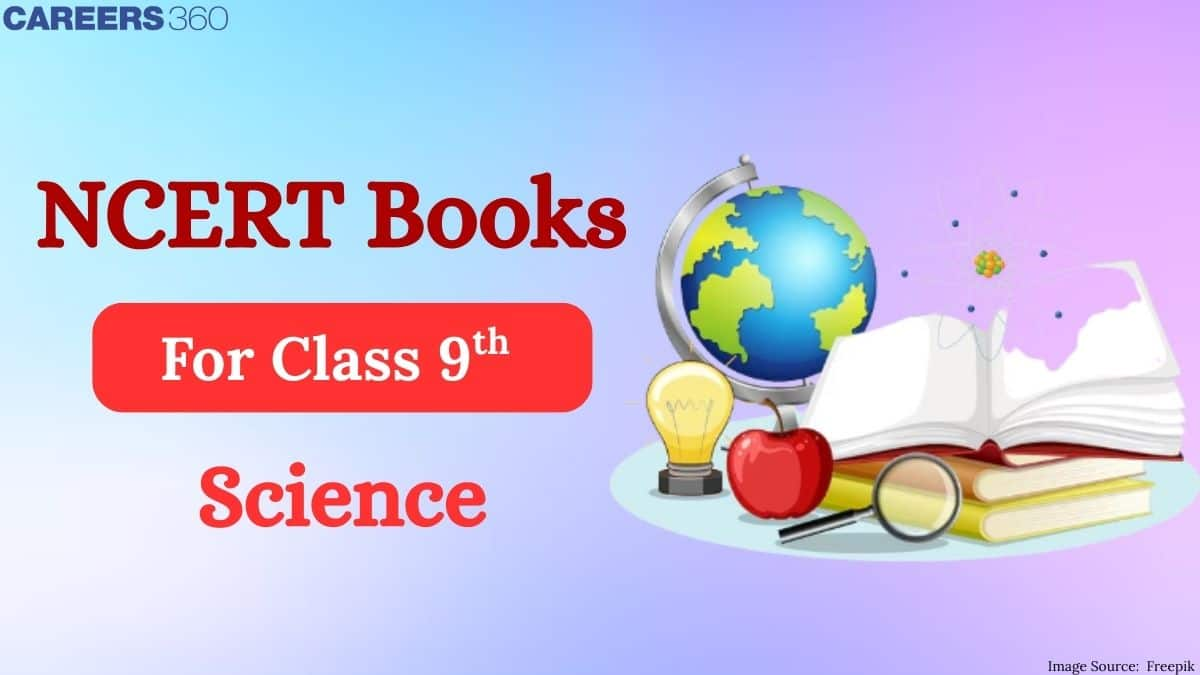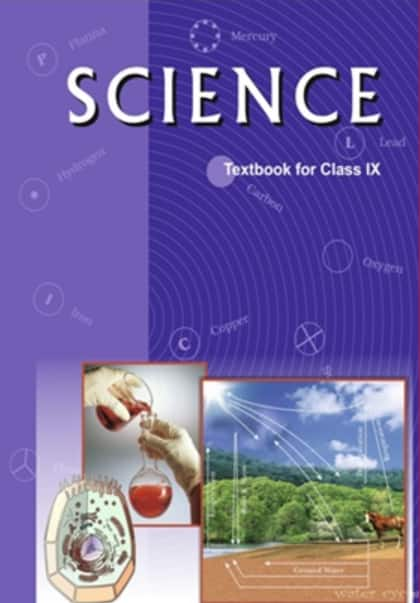NCERT Books for Class 9 Science – Download PDF (Latest Edition)
Science is one of the most important subjects in Class 9, as it builds the foundation for higher studies. The NCERT Book for Class 9 Science is available on the official NCERT website, ncert.nic.in. The Class 9 Science textbook PDF NCERT offers a perfect blend of theoretical concepts and practical explanations, making complex topics easier to understand. It answers essential questions such as what the world around us is made of, how atoms combine to form different substances, why cells are called the fundamental unit of life, and what causes objects to fall.
This Story also Contains
- Download NCERT Book for Class 9 Science PDF 2026
- NCERT Class 9 Science Book 2026 Chapter-Wise links
- How To Download Free NCERT Class 9 Science Book PDF 2026?
- Uses Of The NCERT Science Book Class 9 2026
- Important Changes in the NCERT Book for Class 9 Science
- NCERT Solutions for Class 9 Science
- NCERT Books for Class 9 Subject-Wise

The NCERT Books for Class 9 are widely used in CBSE-affiliated schools as well as many state boards. After completing the textbook, students may also refer to additional books for extra practice. NCERT books promote a deeper understanding of concepts through clear explanations and examples, making learning easier and more engaging. Students can also use NCERT solutions along with the textbook to prepare thoroughly for their exams.
Download NCERT Book for Class 9 Science PDF 2026
Students can find the direct download link to the latest NCERT Class 9 Science book PDF 2026 below, which is free to download. This book is written in simple language to help students understand concepts easily and prepare well for exams.
| Book Title | Download link |
| NCERT Book for Class 9 Science PDF (English medium) | Click here |
| NCERT Book for Class 9 Science PDF (Hindi medium) | Click here |
NCERT Class 9 Science Book 2026 Chapter-Wise links
There is only one Class 9 Science book PDF 2026 for Physics, Chemistry, and Biology, which is available in three language mediums. All the included chapters, according to the latest syllabus, are given below:
Chapter no. | Chapter Name (English medium) | Chapter Name (Hindi Medium) |
|---|---|---|
1 | ||
2 | ||
3 | ||
4 | ||
5 | ||
6 | ||
7 | ||
8 | ||
9 | ||
10 | ||
11 | ||
12 |
How To Download Free NCERT Class 9 Science Book PDF 2026?
Students who want to download chapter-wise Class 9 Science NCERT book PDF by following the steps given below
Go to the official link: https://ncert.nic.in/
Search "Textbook" in the search bar on the upper right-hand side of the site.
"Textbooks PDF (I-XII)" will show up. Click on this.
Select your class (Class IX) and subject (Science) from the provided dropdown.
Now, you are supposed to choose the name of the book (Science).
Click on the “Go” button.
A list of chapters will appear, and you can download the individual chapters in PDF format.
Click on the chapter-wise links and download the Class 9 Science NCERT book PDF for each chapter separately
Once downloaded, you can access the textbook offline anytime for easy reference and study.
NCERT Book for Class 9 Science: Cover Page
Given below is the cover page of the NCERT Class 9 Science Book. This page reflects the theme of science and gives students a glimpse of what they will learn inside.

Also Read:
Uses Of The NCERT Science Book Class 9 2026
The uses of the NCERT Science Book are outlined below
NCERT Class 9 books are essential for preparing for entrance, scholarship, and board exams.
The topics are arranged from basic to advanced to help students build a strong foundation.
Reading NCERT books clears the basics and supports self-study.
They help in preparing for both school exams and competitive exams.
These books provide clear explanations that make complex topics easier to understand.
The exercises at the end of each chapter will help you improve problem-solving skills.
Important Changes in the NCERT Book for Class 9 Science
In the NCERT Book for Class 9 Science 2025–26, NCERT has made many updates. Some topics and chapters have been removed to reduce the burden on students.
- The Class 9 Science textbook has been revised for the academic session 2026, aligned with the latest NCERT syllabus. Several chapters and topics have been removed or trimmed to reduce the syllabus and focus on essential concepts.
- The syllabus is now focused on four main parts like Matter, Living World, Motion & Work, and Food Production.
- More importance is given to activities, experiments, and internal tests instead of just memorising.
NCERT Solutions for Class 9 Science
These Class 9 Science Solutions are carefully made to help students understand complex problems easily and excel in their exams. By utilising these solutions, students can improve their knowledge, boost problem-solving skills, and achieve academic success in Class 9 Science. Below are the Chapter-wise solutions link:
NCERT Books for Class 9 Subject-Wise
Click on the links below to know more about the NCERT books for other subjects.
| NCERT books for class 9 Social Science |
| NCERT Books for class 9 English |
| NCERT Books for class 9 Maths |
| NCERT Books for class 9 Hindi |
Frequently Asked Questions (FAQs)
Class 9 Science NCERT book has been designed by the expert Science teachers after major research on all topics. NCERT Books and solutions for NCERT Class 9 Science have been created in a manner to provide complete and thorough knowledge about each topic in an easy and simple-to-understand language
You can download the NCERT Class 9 Science book for 2026 from the official NCERT website. They provide PDF versions of all their textbooks for free, allowing students to access and study the materials easily.
Yes, the NCERT Class 9 Science books PDF are available in several languages, including English, Hindi, and Urdu. This makes it easier for students from different backgrounds to study in a language they are comfortable with.
The NCERT Book for Class 9 Science are typically available in PDF format. This format is widely accessible and can be read on various devices, including computers, tablets, and smartphones.
Class 9 Science NCERT PDFs are more than just academic resources; they are your allies in the journey towards competitive exam success.
The NCERT Class 9 Science Book are important as they provide a comprehensive and structured syllabus aligned with the CBSE curriculum, ensuring that students grasp fundamental scientific concepts effectively.
NCERT Book for Class 9 Science are highly recommended because of their alignment with the CBSE syllabus. Students can also refer to additional reference books for more practice.
NCERT Class 9 Science books provide clear explanations of concepts, structured chapters, and a variety of chapter exercises that help reinforce learning.
The NCERT Class 9 Science book includes several chapters covering topics like Matter, Motion, Force, Energy, and more
Yes, NCERT textbooks are usually available is available in Hindi, English, and Urdu. They might also be available in other regional languages, depending on the state board. Check the official NCERT website for availability.
Popular Questions
Courses After 12th
Applications for Admissions are open.
As per latest syllabus. Physics formulas, equations, & laws of class 11 & 12th chapters
JEE Main Important Chemistry formulas
Get nowAs per latest syllabus. Chemistry formulas, equations, & laws of class 11 & 12th chapters
JEE Main high scoring chapters and topics
Get nowAs per latest 2024 syllabus. Study 40% syllabus and score upto 100% marks in JEE
JEE Main Important Mathematics Formulas
Get nowAs per latest syllabus. Maths formulas, equations, & theorems of class 11 & 12th chapters
